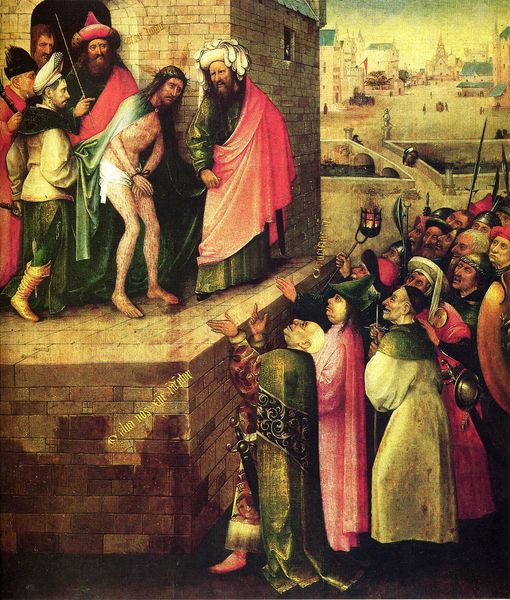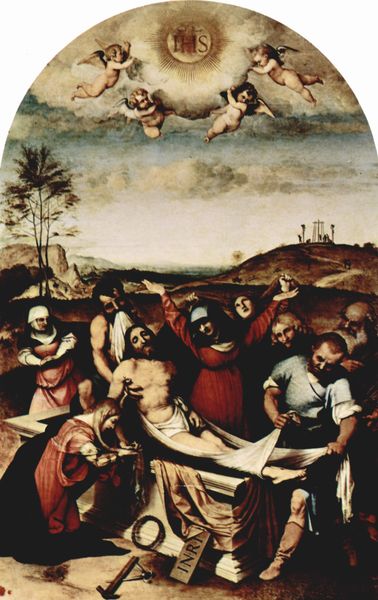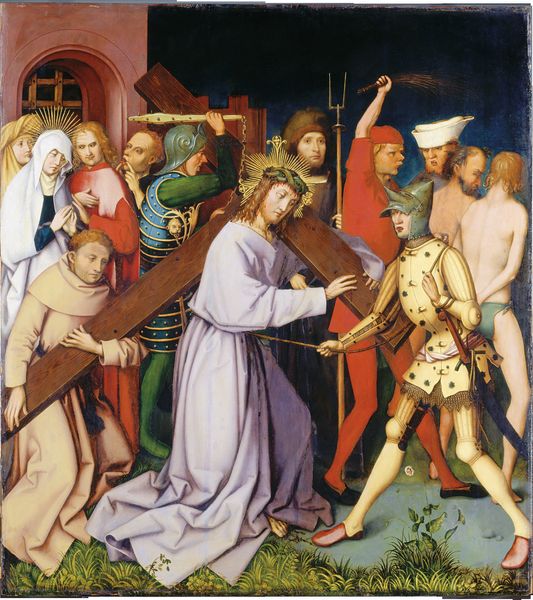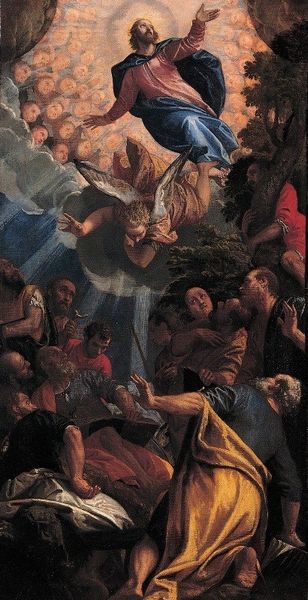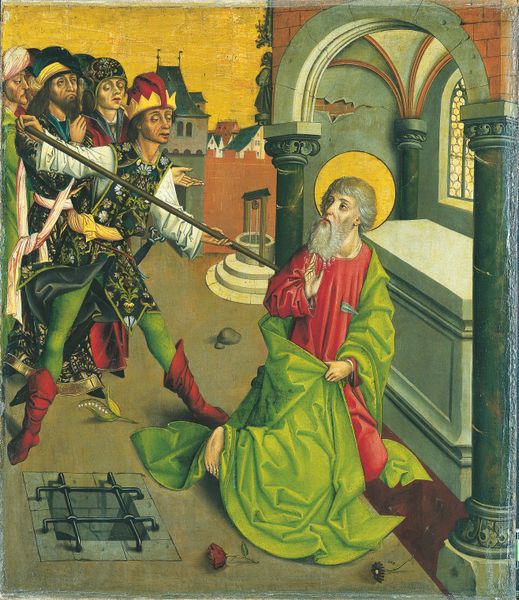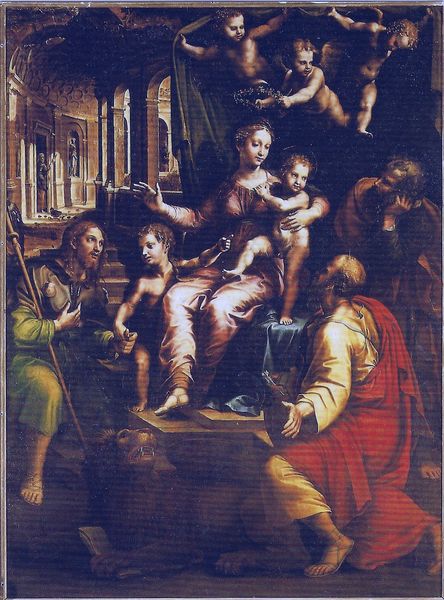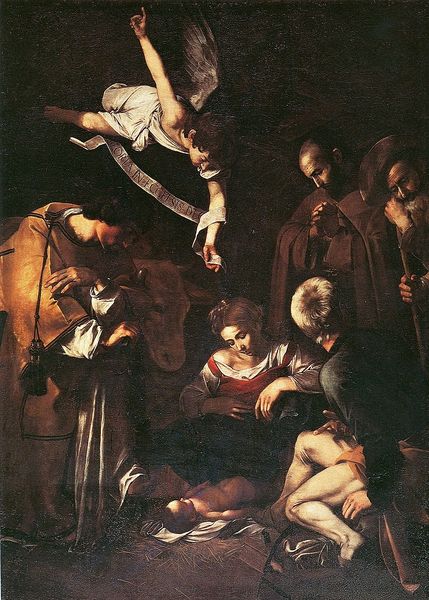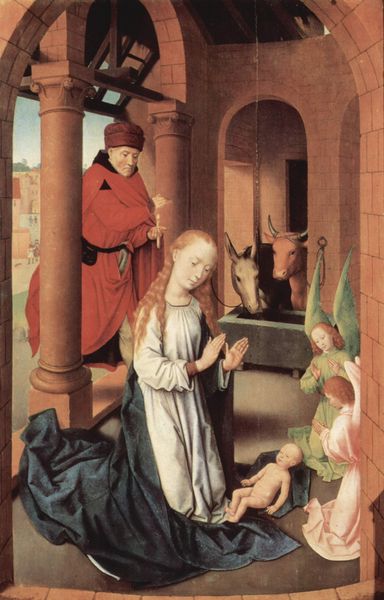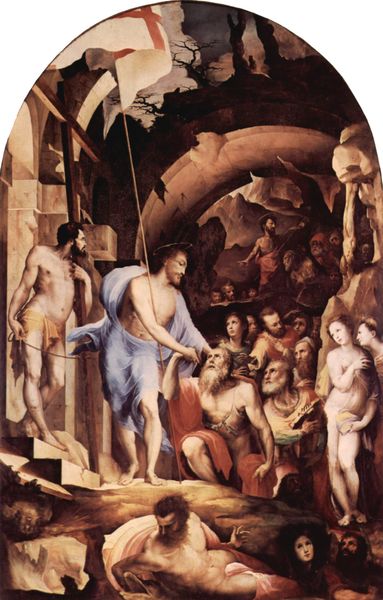
oil-paint
#
portrait
#
oil-paint
#
landscape
#
figuration
#
oil painting
#
jesus-christ
#
christianity
#
history-painting
#
italian-renaissance
#
portrait art
#
virgin-mary
#
christ
Copyright: Public domain
Albrecht Dürer’s painting, The Cross, presents a scene teeming with figures and a palpable sense of drama. The composition is structured by a series of diagonal lines formed by the cross and the bodies of those surrounding Christ, creating a dynamic yet unsettling visual rhythm. Dürer uses colour to intensify the emotional impact: the muted tones of the landscape contrast sharply with the vivid hues of the figures’ garments. We can see how Dürer has used hierarchical scale, placing Jesus in the foreground, kneeling under the weight of the cross. This is of course not 'realistic' but draws the eye to the painting's central focus. The artist invites us to reflect not just on the depicted event but on its broader implications for human suffering and redemption. Note how the formal arrangement serves to underscore themes of burden and persecution, but also, perhaps, resilience. Dürer leaves us to consider that art doesn’t offer fixed meanings, but possibilities for ongoing dialogue.
Comments
No comments
Be the first to comment and join the conversation on the ultimate creative platform.
